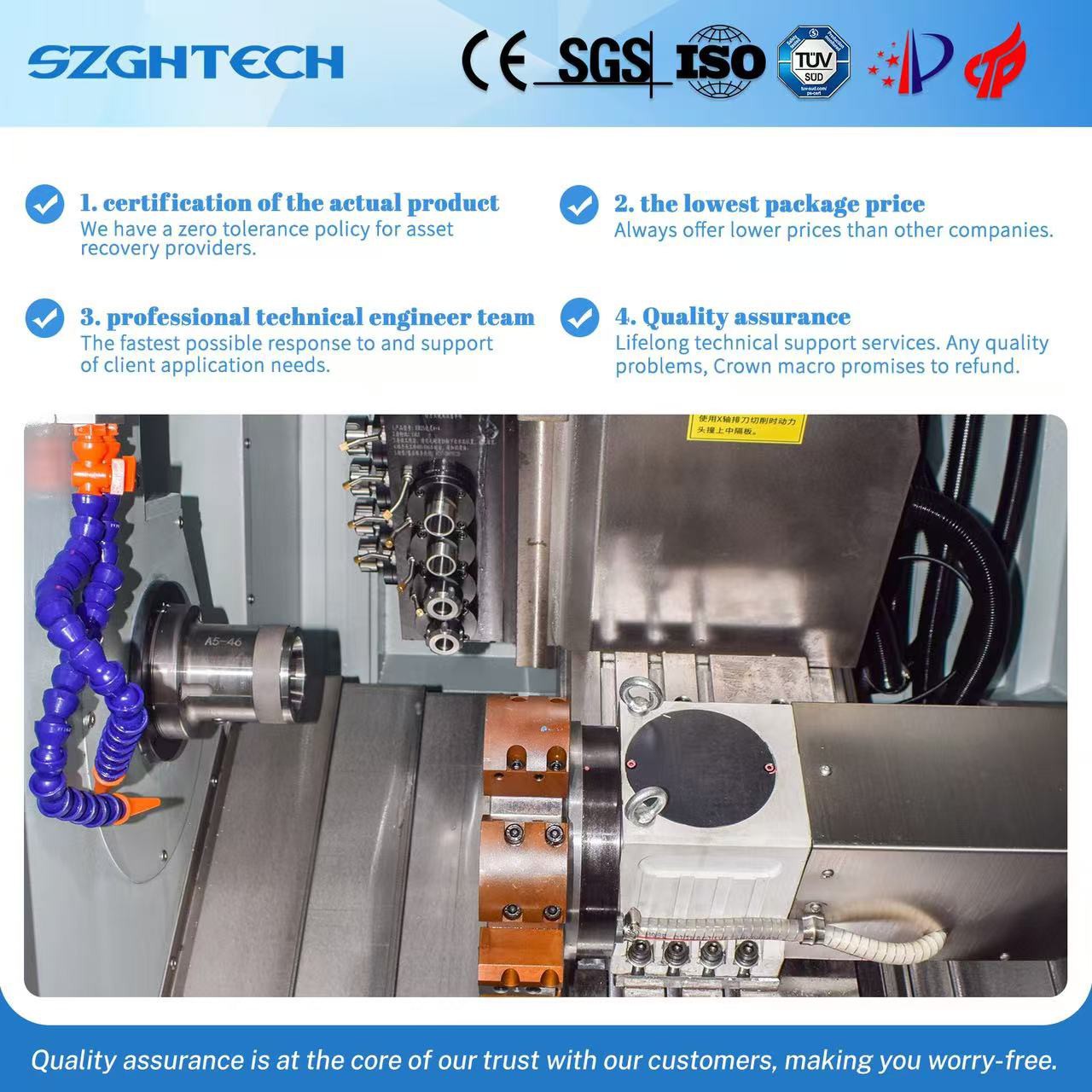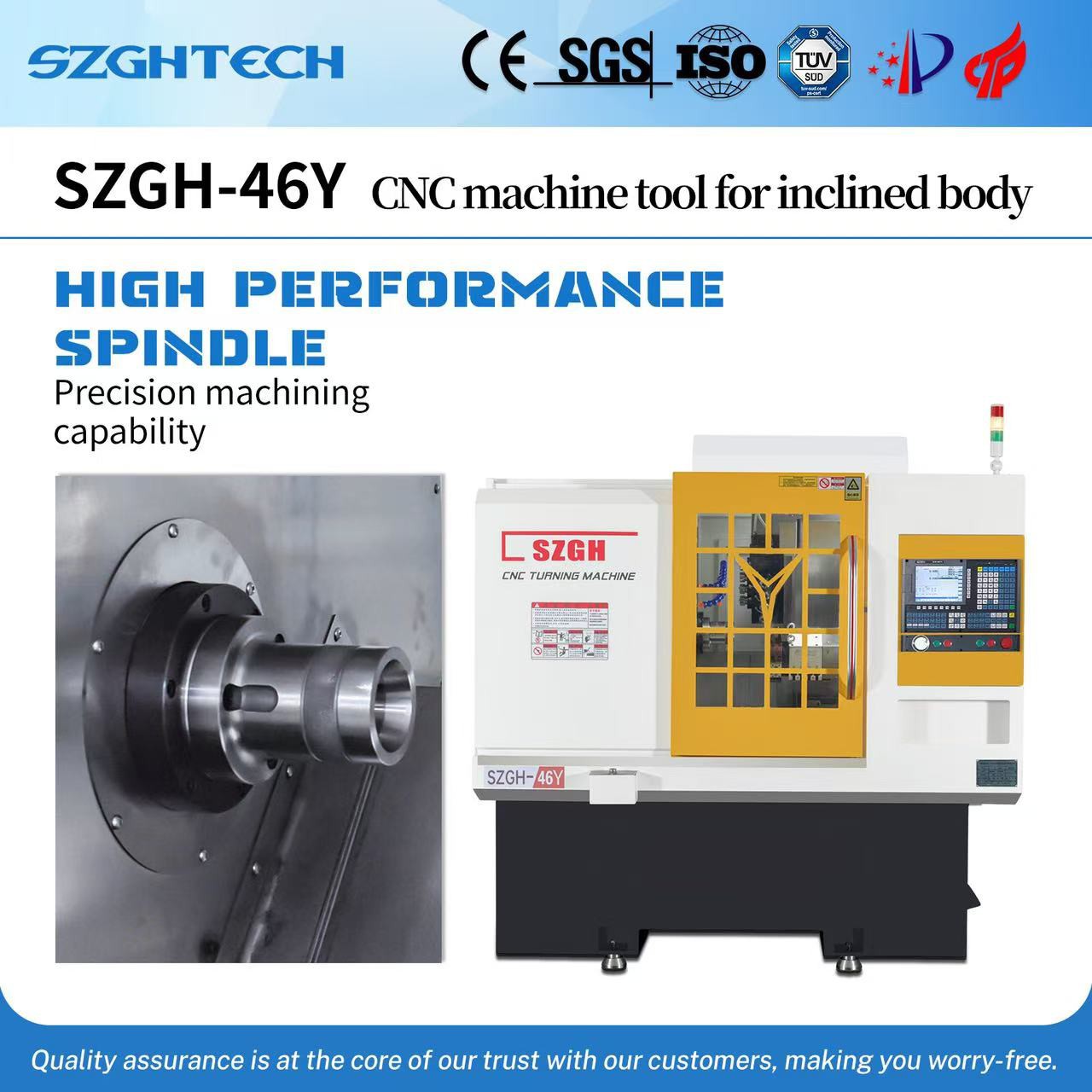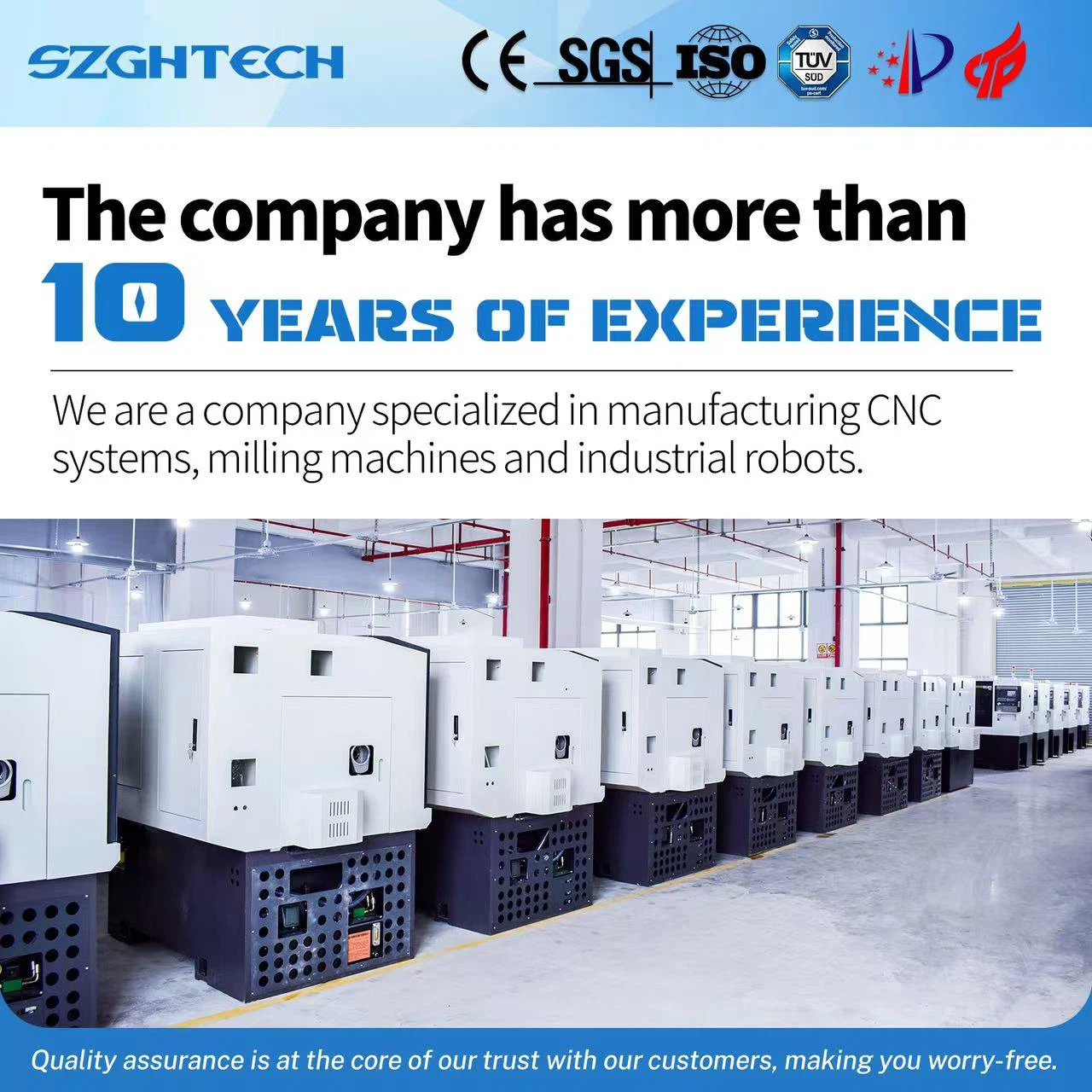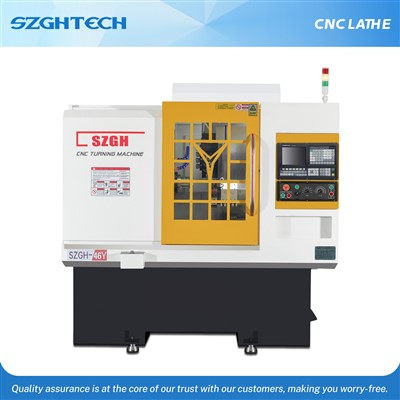Product Features
1. High-precision processing: It adopts advanced CNC system and high-precision ball screw.
2. Turning and milling integration: Turning and milling compound processing greatly improves processing efficiency, reduces the error of multiple clamping, and is suitable for processing parts with complex shapes.
3. Automated control system: It is equipped with the latest CNC system, supports multiple programming languages, is simple to operate and easy to maintain, and improves the automation level of production.
4. Space saving: The compound machine tool occupies a small area, reduces the space occupied in the workshop, and is suitable for working environments with limited space.
5. Multi-functional application: It can not only perform turning processing, but also milling, drilling, tapping and other multi-process operations to meet various processing needs.

Multifunctional integration
Turn-mill compound machine tools integrate turning and milling functions on the same device, and can perform a variety of processing operations such as turning, milling, drilling, tapping, and grinding. This can reduce the number of equipment changes, improve processing efficiency and flexibility, and is particularly suitable for complex parts that require multiple processes

Save time and cost
Since the turning-milling compound machine tool can complete multiple processing processes in one clamping, it reduces the multiple clamping and transportation processes required by traditional machine tools, thereby significantly reducing the processing time and process costs. In addition, manual intervention and equipment switching are reduced, which also improves overall production efficiency.







